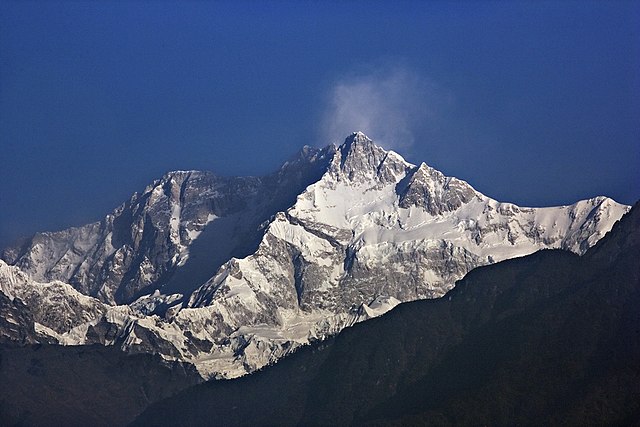khakisofirvington.com – Nestled on the border between India and Nepal, Kangchenjunga stands as a testament to the awe-inspiring power of nature. With its summit reaching 8,586 meters (28,169 feet) above sea level, it is the third-highest mountain on Earth, following the towering giants Mount Everest and K2. The name “Kangchenjunga” is derived from the Tibetan words “Kang” (snow) and “chenjunga” (great five), reflecting the five peaks that make up this magnificent mountain range.
Geographical Significance
Kangchenjunga is part of the Eastern Himalayas, a region known for its breathtaking landscapes and challenging terrain. The mountain’s location straddles the Sikkim state of India and the Taplejung District of Nepal. Its northern face is considered one of the most difficult to climb due to its steep and complex nature, making it a formidable challenge for mountaineers.
Historical Climbing Attempts and First Ascent
The history of Kangchenjunga is intertwined with the pioneering spirit of mountaineering. The first successful ascent was achieved in 1955 by a British expedition led by Charles Evans. This expedition marked a significant milestone in the annals of Himalayan climbing, showcasing the skill, determination, and teamwork required to conquer such a formidable peak.
Cultural and Religious Importance
Kangchenjunga holds a special place in the hearts of the local communities. For the people of Sikkim, it is considered a sacred mountain, and climbing its summit was historically forbidden. This reverence stems from the belief that the mountain is the abode of the gods, and disturbing its sanctity was deemed disrespectful. However, with changing times and the advent of modern mountaineering, these restrictions have been relaxed, allowing climbers to attempt the ascent while respecting local customs and traditions.
Environmental Conservation Efforts
The region surrounding Kangchenjunga is a biodiversity hotspot, home to a variety of flora and fauna. Recognizing the importance of preserving this natural heritage, both India and Nepal have implemented measures to protect the environment. These include the establishment of the Kangchenjunga Conservation Area in Nepal and the Khangchendzonga Biosphere Reserve in India, which aim to safeguard the ecosystem and promote sustainable tourism.
Climbing Kangchenjunga Today
Today, Kangchenjunga continues to attract climbers from around the world, drawn by its majestic beauty and the challenge it presents. Climbing the mountain requires meticulous planning, physical fitness, and mountaineering experience. The standard route to the summit is via the southwest face, which, while still demanding, is considered more feasible than the northern approach.
Conclusion
Kangchenjunga is more than just a mountain; it is a symbol of natural grandeur, cultural significance, and human endeavor. Its towering presence serves as a reminder of the wonders of our planet and the importance of preserving them for future generations. Whether viewed from afar or experienced up close, Kangchenjunga leaves an indelible mark on all who encounter it, standing as a majestic guardian of the Himalayas.
